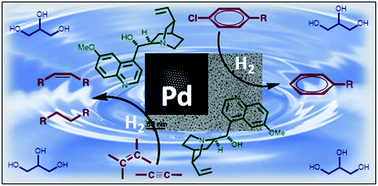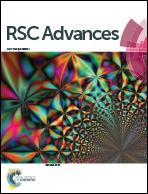Palladium nanoparticles stabilised by cinchona-based alkaloids in glycerol: efficient catalysts for surface assisted processes†
Abstract
Palladium nanoparticles (PdNPs) were synthesised and fully characterised, both in solution and the solid state, using naturally-occurring cinchona-based alkaloids in neat glycerol. These nano-systems were stable under reaction conditions, finding applications in hydrogenation and hydrodehalogenation processes, as a result of their surface-like behaviour. Their reactivity was improved in relation to that involving PdNPs stabilised by phosphines and also by Pd/C as a heterogenous catalyst, mainly in terms of recyclability. In particular, the colloidal palladium catalyst stabilised by quinidine was highly efficient to promote the hydrodechlorination of aromatic compounds under low dihydrogen pressure. These original catalysts found applications in the synthesis of secondary and tertiary amines including N-substituted anilines, by means of one-pot tandem Pd-catalysed methodologies under smooth conditions. In all of these processes, glycerol performed a crucial function as a liquid support for the immobilisation of nanoparticle-based catalysts, allowing both the stabilisation of the nano-catalysts and easy recycling of the catalytic phase.


 Please wait while we load your content...
Please wait while we load your content...